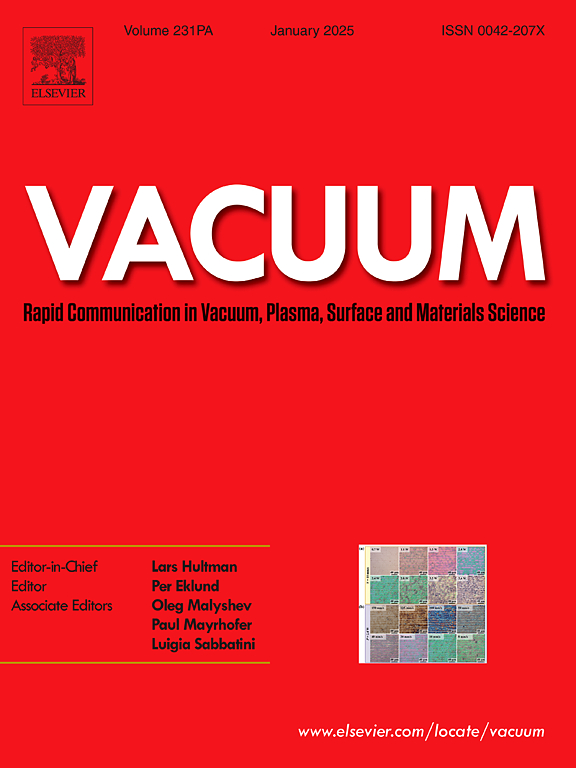Study on cavitation flow field of cavitation nozzle and strengthening mechanism of cavitation jet of 7075 aluminum alloy
IF 3.8
2区 材料科学
Q2 MATERIALS SCIENCE, MULTIDISCIPLINARY
引用次数: 0
Abstract
This study aims to explore the influence of the divergence angle of a nozzle on the flow field structure of a water jet. Based on the traditional conical nozzle structure, two types of nozzles were designed: angular nozzles with divergence angles ranging from 0° to 30° and abrupt expansion nozzles with divergence angles ranging from 60° to 180°. A numerical model was established to analyze the relationship between the nozzle divergence angle and the nozzle exit velocity. The model was validated using Fluent simulations, and the impact of the nozzle divergence angle on the water jet flow field structure was investigated.The research findings indicate that the numerical model provides a good fit to the nozzle exit jet velocity with a maximum error of only 14.1 % when compared to the simulation model. This suggests that the model has practical implications for predicting the exit jet velocity of conical nozzles, allowing for rapid assessment of jet velocities under different nozzle exit divergence angles. Furthermore, as the divergence angle increases, the nozzle exit jet velocity exhibits a trend of initially decreasing, then increasing, and finally decreasing again. When the nozzle divergence angle is 60°, the exit jet velocity is the lowest, measuring 171 m/s, while an increase in the divergence angle to 90° results in a 7 % velocity increase. At a 60° divergence angle, the axial velocity decreases most rapidly, leading to jet deflection.Under the same operating conditions, a 90° divergence angle nozzle yields the highest exit dynamic pressure at 11.646 MPa, an increase of 19 % compared to the 60° divergence angle nozzle. Additionally, at the water jet exit, dynamic pressure exceeding 2 MPa is considered effective impact pressure. At a 60° divergence angle, the effective impact diameter is approximately six times larger than that at 30°, with a 2–3 mm greater effective impact diameter compared to other divergence angles, making it more suitable for surface strengthening operations on metals.Finally, different divergence angle nozzle exit velocities, obtained through fitting, were used to validate the residual stress in 7075 aluminum alloy after water jet impact using ABAQUS simulations and experiments. After water jet impact, 7075 aluminum alloy exhibits primarily residual compressive stress, and the distribution of residual stress resembles a “spoon.” When comparing experimental and simulation values, residual stress changes along the depth direction are generally consistent, with errors ranging from 3.7 % to 39.6 %.
求助全文
约1分钟内获得全文
求助全文
来源期刊

Vacuum
工程技术-材料科学:综合
CiteScore
6.80
自引率
17.50%
发文量
0
审稿时长
34 days
期刊介绍:
Vacuum is an international rapid publications journal with a focus on short communication. All papers are peer-reviewed, with the review process for short communication geared towards very fast turnaround times. The journal also published full research papers, thematic issues and selected papers from leading conferences.
A report in Vacuum should represent a major advance in an area that involves a controlled environment at pressures of one atmosphere or below.
The scope of the journal includes:
1. Vacuum; original developments in vacuum pumping and instrumentation, vacuum measurement, vacuum gas dynamics, gas-surface interactions, surface treatment for UHV applications and low outgassing, vacuum melting, sintering, and vacuum metrology. Technology and solutions for large-scale facilities (e.g., particle accelerators and fusion devices). New instrumentation ( e.g., detectors and electron microscopes).
2. Plasma science; advances in PVD, CVD, plasma-assisted CVD, ion sources, deposition processes and analysis.
3. Surface science; surface engineering, surface chemistry, surface analysis, crystal growth, ion-surface interactions and etching, nanometer-scale processing, surface modification.
4. Materials science; novel functional or structural materials. Metals, ceramics, and polymers. Experiments, simulations, and modelling for understanding structure-property relationships. Thin films and coatings. Nanostructures and ion implantation.
 求助内容:
求助内容: 应助结果提醒方式:
应助结果提醒方式:


